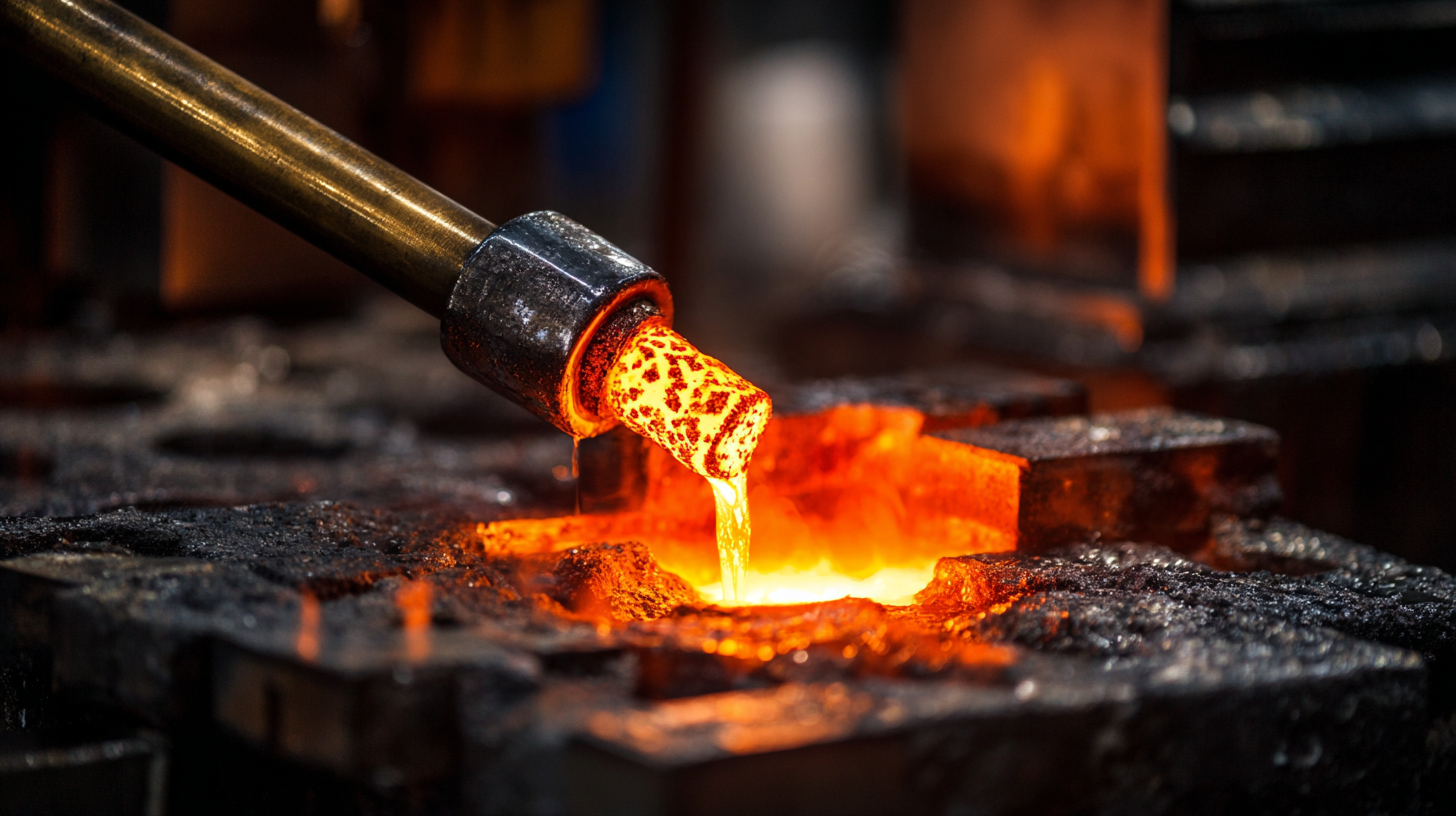In today's precision manufacturing landscape, the demand for high-quality, intricately designed components has never been greater, with industries ranging from aerospace to jewelry requiring methods that can deliver intricate details and superior performance. Lost Wax Casting, also known as investment casting, has emerged as a frontrunner in meeting these demands, outperforming traditional methods in various crucial aspects. According to a report by Global Market Insights, the investment casting market is projected to exceed USD 20 billion by 2027, primarily driven by the increasing need for precision parts in automotive and medical applications. This method not only allows for tighter tolerances and complex geometries but also significantly reduces material waste and post-production costs. As manufacturers look to adopt innovative technologies, the advantages of Lost Wax Casting become even more pronounced, particularly in terms of after-sales service and maintenance costs, making it a vital player in the future of precision engineering.

Lost wax casting, also known as investment casting, stands out in precision manufacturing due to its exceptional accuracy and detail retention. This method allows for the creation of complex shapes and intricate designs that traditional casting techniques often struggle to achieve. The process begins with a wax model, which is coated in a ceramic shell, allowing for fine details to be captured. Once the wax is melted and drained away, the resulting cavity provides a high-fidelity mold that enhances the precision of the final cast product.

Another significant advantage of lost wax casting is its ability to produce parts with tight tolerances. This precision minimizes the need for extensive secondary machining, which can be both time-consuming and costly. With lost wax casting, manufacturers can achieve near-net shapes, reducing material waste and improving efficiency. Furthermore, the consistent quality of the castings leads to improved performance and reliability in various applications. Overall, the superior precision of lost wax casting makes it an ideal choice for industries requiring meticulous craftsmanship and high-quality outcomes.
Lost wax casting, also known as investment casting, has emerged as a superior choice in precision manufacturing, particularly due to its ability to achieve enhanced detail and complexity. According to a report by Market Research Future, the investment casting market is poised to grow significantly, projected to reach USD 20.1 billion by 2025. This growth is largely attributed to the method's ability to produce intricate designs that traditional casting methods struggle to replicate. The unique capability to create fine features and complex geometries makes lost wax casting ideal for industries requiring meticulous craftsmanship, such as aerospace and medical devices.
One of the key advantages of lost wax casting is its capacity for tight tolerances, often minimizing the need for extensive machining. With tolerances as tight as 0.1 mm achievable, manufacturers can realize significant cost savings and reduced lead times. For instance, a study by the American Foundry Society highlights that companies employing advanced casting techniques have noted a 30% reduction in time-to-market for new products.
**Tip:** When selecting a casting method, consider the complexity of your design. If your components have intricate features or undercuts, lost wax casting is likely the best choice to ensure high precision.
Furthermore, the material versatility of lost wax casting allows for the use of a wide range of metals, including high-performance alloys. This flexibility enables manufacturers to tailor properties to meet specific performance criteria.
**Tip:** Always work with a reputable casting supplier who can provide guidance on material selection based on your project's requirements, ensuring the optimal balance of performance and manufacturability.
| Feature | Lost Wax Casting | Traditional Methods |
|---|---|---|
| Precision | High precision with intricate details | Limited precision, can lose fine details |
| Complex Shapes | Ability to create complex geometries | Difficult to achieve complex shapes |
| Material Versatility | Compatible with a wide variety of materials | Limited material options |
| Surface Finish | Smooth surface finish with minimal post-processing | Rougher finish requiring more finishing work |
| Production Time | Faster production for complex parts | Longer production time for detailed items |
Lost wax casting, also known as investment casting, is renowned for its precision and durability compared to traditional casting methods. One of the key advantages lies in the comparative durability of the final products. Lost wax casting allows manufacturers to create intricate designs with superior structural integrity, making it ideal for applications that require high strength and reliability. Components produced using this method exhibit lower susceptibility to cracks and deformations under stress, ensuring longevity in demanding environments.
When choosing casting methods, consider the specific requirements of your project. If durability is a priority, lost wax casting is a smart choice. It’s essential to work closely with skilled artisans who understand the nuances of this casting technique, as proper investment and wax mold preparation significantly influence the end product's quality.
Moreover, leveraging advanced materials in the lost wax process can enhance performance even further. Selecting the right alloys can result in components that not only meet but exceed traditional standards. Always evaluate the material properties, such as tensile strength and corrosion resistance, to ensure the best outcomes for your precision manufacturing needs.

Lost wax casting, an ancient technique, has gained renewed attention for its cost-effectiveness in high-volume production. Unlike traditional manufacturing methods, which often involve lengthy processes and extensive labor, lost wax casting offers a streamlined approach that results in significant savings. The ability to create complex geometries with minimal waste not only reduces material costs but also enhances the overall efficiency of production lines.
Moreover, the scale of production plays a crucial role in cost management. Lost wax casting requires initial investment in molds, but once set, these molds can produce high volumes of identical parts with remarkable precision. This makes it particularly attractive for industries looking to maximize output while minimizing expenses. The repeatability of the process ensures that each piece meets strict specifications, further driving down costs associated with rework and defects. As manufacturers seek ways to remain competitive, the cost-effectiveness of lost wax casting solidifies its position as a superior alternative for precision manufacturing in high-demand environments.
This chart compares the performance metrics of Lost Wax Casting and traditional methods across five evaluation criteria: Precision, Production Speed, Material Usage, Cost Per Unit, and Post-Production Work. The data indicates that Lost Wax Casting significantly outperforms traditional methods in most areas, making it a cost-effective solution for high-volume production.
The adoption of lost wax casting techniques in precision manufacturing offers significant environmental benefits compared to traditional methods. One of the most compelling advantages is the reduction in material waste. The precision of lost wax casting allows for more accurate designs, minimizing excess material that would typically be discarded in traditional processes. This efficiency not only conserves resources but also lowers overall production costs.
Additionally, lost wax casting utilizes wax patterns that can be reused or melted down after the casting process. This results in less waste compared to conventional methods that may involve permanent molds or excess scrap material. Furthermore, the process can be adapted to use environmentally friendly materials, including biodegradable waxes, which contribute to a smaller ecological footprint. These innovations highlight how the industry is moving towards more sustainable practices, aligning with global efforts to reduce environmental impact while maintaining high-quality manufacturing standards.




